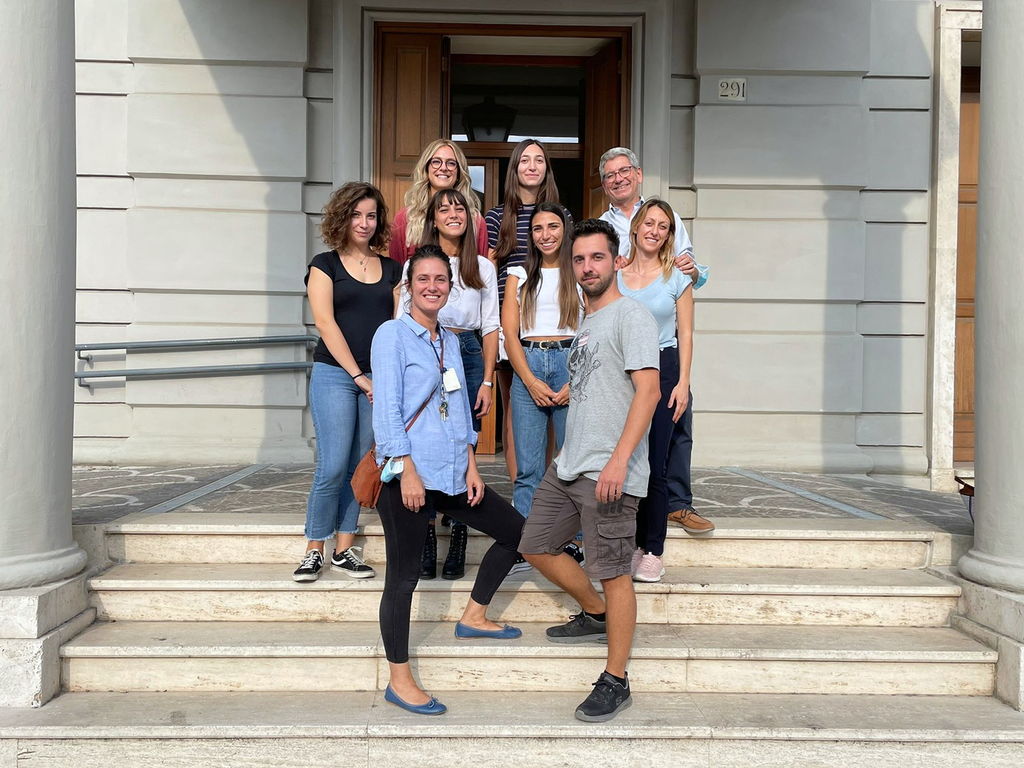
A chemo-free therapeutic approach for treating childhood tumours
Several malignant neoplasms, many of which are common in children, such as neuroblastoma, rhabdomyosarcoma and medulloblastoma, may result from the activation of the MYCN oncogene, a gene that potentially promotes the development of cancerous cells.
These tumours, which share a high level of aggressiveness and resistance to conventional anti-cancer therapies, cannot be attacked with molecularly targeted therapies due to the unavailability of specific drugs against the MYCN transcription factor.
Over the last decade, intending to identify potential targets, the Laboratory of Cancer Molecular Genetics of the Department of Molecular Medicine coordinated by Giuseppe Giannini has focused on MYCN-dependent replicative stress and damage to the genome, which make tumour cells driven by this oncogene highly dependent on the activity of specific proteins involved in mitigating replicative stress and repairing DNA damage.
In their latest work, published in the journal Oncogene and funded by the Italian Association for Cancer Research (Airc) and the Pasteur Institute Italy-Fondazione Cenci Bolognetti, researchers from the Department of Biology and Biotechnology and the Department of Experimental Medicine at Sapienza University, together with Giannina Gaslini Research Institute in Genoa, Sant'Andrea and Bambino Gesù hospitals in Rome and the Italian Institute of Technology, have demonstrated the synergistic activity of two specific inhibitors in killing MYCN-dependent tumour cells. On the one hand, their action increases DNA damage and, on the other, prevents the activation of the molecular brakes that block the processes of DNA replication and cell division, a condition that leads cancer cells to death by "mitotic catastrophe".
"The idea of testing the combination of the two inhibitors," says Giuseppe Giannini, " stems from the evidence that inhibitors of PARP, a protein involved in DNA damage repair, increase replicative stress in MYCN-dependent tumours, but at the same time, activate cell cycle blocking mechanisms, mediated by the CHK1 protein, which protect tumour cells from the deleterious effects of PARP inhibition."
"The combined inhibition of PARP and CHK1," continues Stefano di Giulio from Sapienza University, first author of the study, "would eliminate the latter protective mechanism, causing the inexorable death of the cell, like a car running downhill, with a failing engine and even broken brakes!"
The potential of this drug combination was successfully tested first in preclinical models of neuroblastoma and medulloblastoma in vitro, and then also in animal models of the same neoplasms, observing a significant reduction in tumour growth and increased survival in animals treated with the combination compared to control groups.
"The synergistic activity of the two inhibitors," adds Valeria Colicchia of Sapienza, "has also allowed us to reduce the dosage of the CHK1 inhibitor to be administered in vivo, thus significantly reducing the toxicity problems associated with this type of drug, while still maintaining strong anti-tumour efficacy."
“Considering the advanced state of development and testing of these two drugs," concludes Marialaura Petroni of Sapienza, the other study coordinator, "we expect this new therapeutic approach to be readily translated into new clinical trials."
According to the authors, the pharmacological combination of PARP and CHK1 inhibitors may represent a new and valuable chemo-free approach for treating MYCN-dependent tumours.
References:
A combination of PARP and CHK1 inhibitors efficiently antagonizes MYCN-driven tumors - Stefano Di Giulio, Valeria Colicchia, Fabio Pastorino, Flaminia Pedretti, Francesca Fabretti, Vittoria Nicolis di Robilant, Valentina Ramponi, Giorgia Scafetta, Marta Moretti, Valerio Licursi, Francesca Belardinilli, Giovanna Peruzzi, Paola Infante, Bianca Maria Goffredo, Anna Coppa, Gianluca Canettieri, Armando Bartolazzi, Mirco Ponzoni, Giuseppe Giannini & Marialaura Petroni - Oncogene (2021). DOI: https://doi.org/10.1038/s41388-021-02003-0
Further Information
Giuseppe Giannini
Department of Molecular Medicine
giuseppe.giannini@uniroma1.it
Marialaura Petroni
Department of Molecular Medicine
marialaura.petroni@uniroma1.it
Stefano Di Giulio
Department of Molecular Medicine
stefano.digiulio@uniroma1.it

